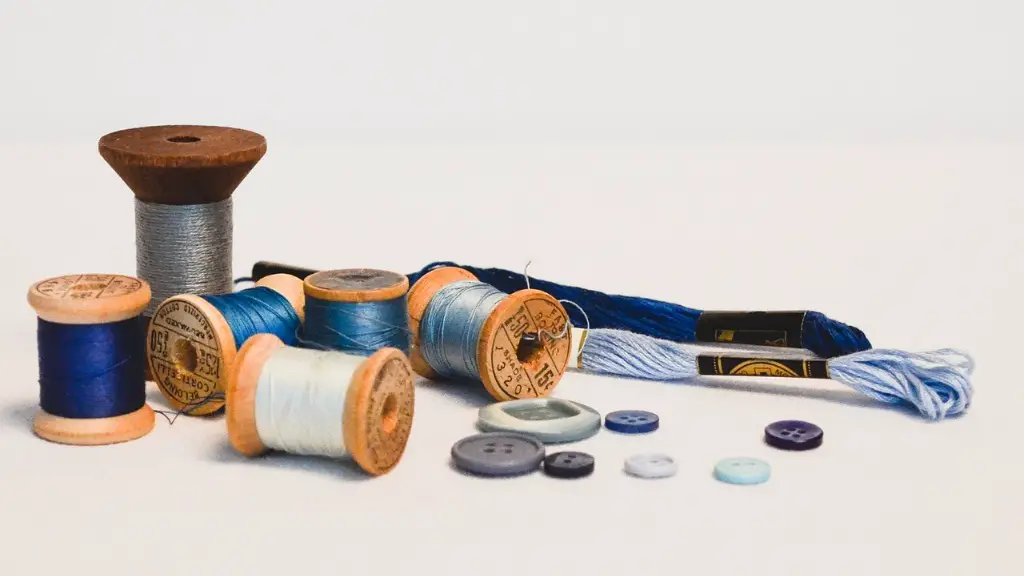Difficulty Diagnosis
When the tension of a sewing machine is off, the thread can be pulled too taut or slack, causing puckers in fabric and knots on the underside of the project. To adjust the tension, it is first important to diagnose the problem. If the thread is loose on the top and tight on the back, the tension is tightened, and if the thread is coming out too tight on the top and loose on the bottom, the tension needs to be loosened.
Changing the Stitch Length
Adjusting the stitch length can be an effective way to adjust the sewing machine tension. For example, a long stitch requires less tension than a short stitch. When making a garment, typically a stitch length between 2.5mm and 4 mm is used. If adjusting the tension doesn’t work, trying a longer stitch may loosen the tension.
Checking the Bobbin
Another common cause of tension problems is an incorrectly wound bobbin. Bobbins should have a neat, uniform shape. If it has a bulge in it, that indicates the thread was wound onto it too tightly, and needs to be unwound and rewound.
Using the Screwdriver
If the bobbin isn’t the problem, the tension can be manually adjusted. First, locate the tension control on the side of the machine–it is usually a small screw or dial with numbers or symbols on it. Then, use a small screwdriver or an Allen wrench to turn the screw or dial. Most machines come with a manual that will provide guidance on tension settings. Commonly, a setting of 4 is recommended for most woven fabrics, and setting 2 or 3 works well for knits.
Confirm with a Test
Once the tension is adjusted, the best way to test it out is to sew a test swatch. Make a test swatch of the fabric to be used for the project and sew some straight lines and curves, as well as zig zags if the project calls for them. After completing the test, check the underside of the fabric to see if the tension is balanced.
Cleaning and Maintenance
It is also important to keep a sewing machine clean and lubricated for proper tension. The bobbin case should be checked once a week for lint and debris, which can affect the tension and cause skipped stitches. The needle should also be changed regularly. Additionally, a sewing machine should be serviced every few years to ensure it remains running at optimum performance.
Check Thread Size
The size of the thread being used can also affect the tension. If a project requires a heavier thread, it will require more tension. If the thread size if incorrect, the tension will be thrown off. It is important to check the thread size to make sure it matches the needle size.
Choosing the Right Needle
Choosing the right sewing needle is also key to maintaining proper tension. Sewing needles have several parts, and it is important to select a needle that is appropriate for the fabric and thread being used. For instance, a knitted fabric will use a stretchy needle and a woven fabric needs a sharper needle.
Adjust Tension Settings
Once the needle, thread, and fabric are properly selected, the tension settings can be adjusted. Incrementally adjust the settings until the desired results of the test swatch are achieved. If the tension is still off, the thread, needle, or fabric should be checked again.
Use Quality Thread
It is important to use quality thread when adjusting the tension on a sewing machine. Low-quality thread can easily break, resulting in skipped stitches and knots on the underside of the project. Good quality thread is stronger and more resilient, helping ensure proper tension.
Sew a Sample
To check whether the tension is still off, a sampling of the project can be sewn. Once the sample is completed, check the underside of the fabric to make sure the tension is coming out even. If adjustments are still needed, the stitch length or settings can be changed.
Download a Manual
If all else fails, the owner’s manual for the sewing machine may provide further instructions on adjusting the tension. Most sewing machines come with a manual, but if it’s lost or missing, there are often online resources to download a new one. Being familiar with the manual is important for troubleshooting and maintaining the machine.
Understand the Mechanicals
It is also helpful to understand the basics of the sewing machine’s mechanics to adjust the tension. Most sewing machines have a tension disk that is responsible for adjusting the tension of the thread. Also, a plunger under the bobbin case can also be tensioned manually. Understanding how these components work can help ensure proper tension adjustments.
Experiment with Different Fabrics
When sewing with different fabrics, it’s important to adjust the tension accordingly. If the project is with a thicker fabric, such as denim or leather, the tension will need to be higher than with a lightweight fabric. Take the time to make multiple test swatches with different fabric weights and adjust the tension accordingly.
Use New Threads
In some cases, it is simply best to use new thread. Over time, the quality of thread can deteriorate, affecting the tension of the stitching. Starting with a fresh spool of thread can help ensure the tension remains balanced.
Maintenance Frequency
Regular maintenance also is key to a well-functioning sewing machine. Inspecting and cleaning the bobbin and tension disk regularly is essential for maintaining proper tension. Additionally, the machine should be oiled and lubricated to keep it running smoothly.




